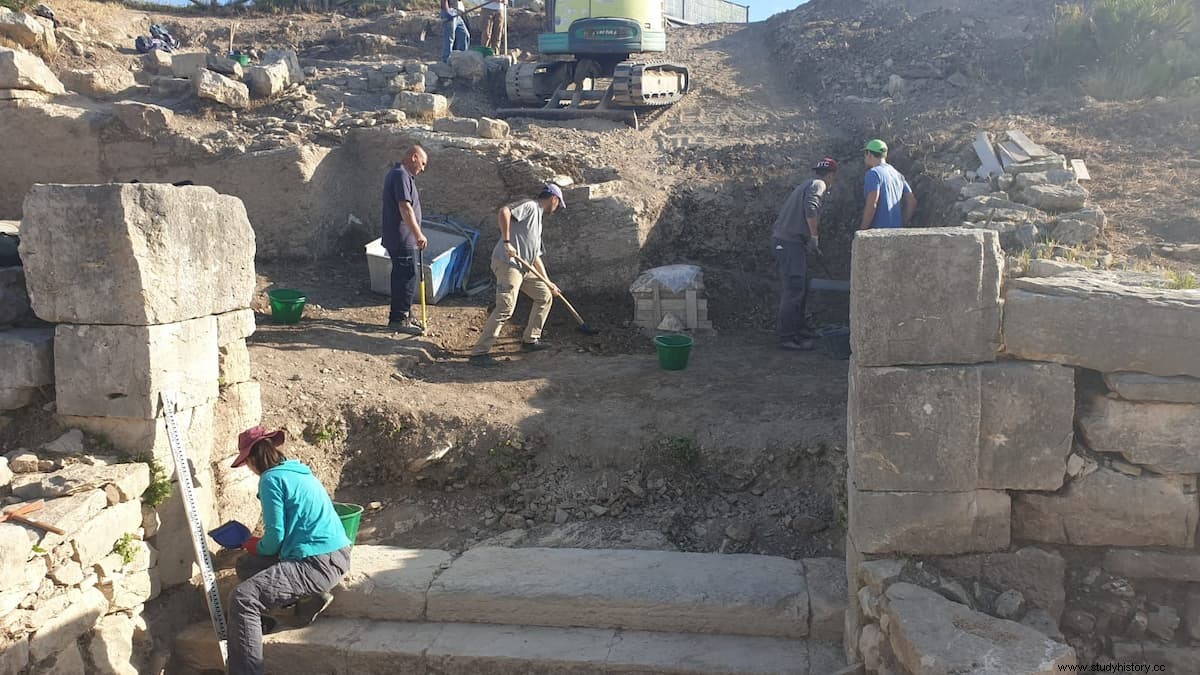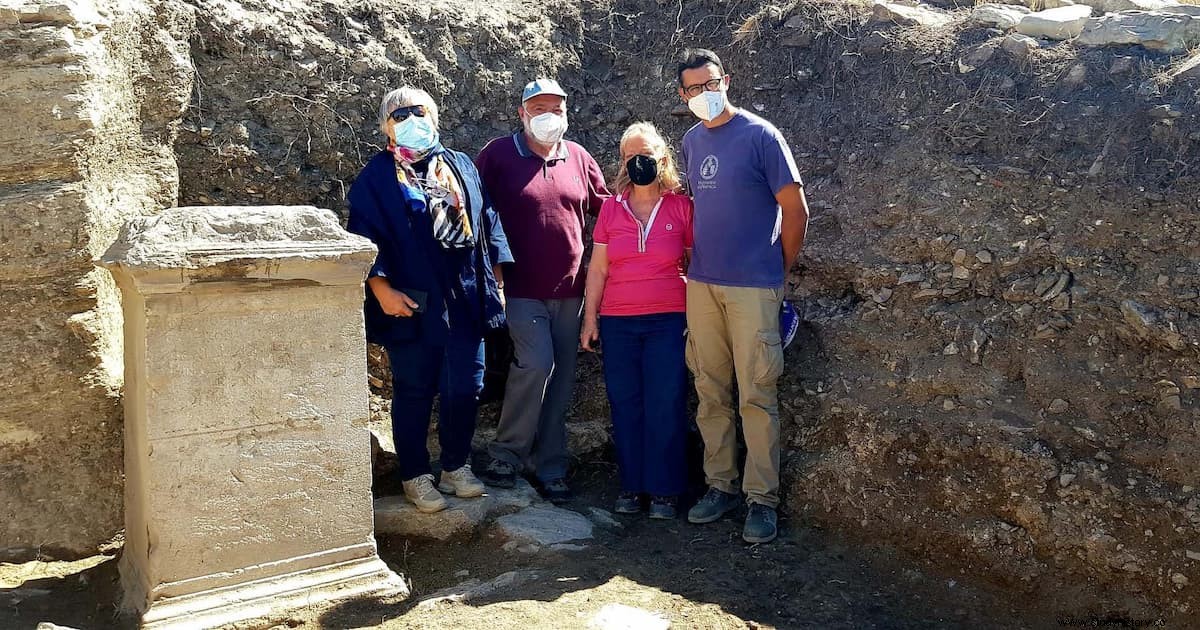The archaeological excavations carried out in the Archaeological Park of Segesta, in the Sicilian province of Trapani, have revealed a new monumental building, near the portico that closed the ancient agora, with the base of an ancient statue on which the name and the works of a person who financially financed and took care of the monumental works of public construction.
Since last May 3, 2021, the team of archaeologists, with postgraduate and doctoral students from various universities, had resumed research in the Segesta agora with its public buildings.
The excavation, concluded last Friday, May 21, was directed by Anna Magnetto, professor of Greek History at the Scuola Normale Superiore and director of the Saet Laboratory, and by Maria Cecilia Parra, professor of Archeology of Magna Graecia and Ancient Sicily at the University of Pisa, and coordinated on the ground by Riccardo Olivito (researcher at IMT Lucca), under the supervision of the director of the Segesta Archaeological Park, Rossella Giglio. Carmine Ampolo, professor emeritus at the Scuola Normale , was present to study the epigraphic material and the historical aspects.

These are very important results, which demonstrate the fundamental role that the munificence of the great families played in the history of ancient Sicily and the prominence that they were given in the most strategic places , says Professor Anna Magnetto, as is now the case with the big sponsors of restorations and events .
The agora of Segesta was built on three inclined terraces from the 2nd century BC, according to urban and monumental models that are widespread in the cities and sanctuaries of the Mediterranean, from Asia Minor to the Aegean and Italian areas. The excavation , explains María Cecilia Parra, was made on the south side of the great square, where a monumental portico (stoa) closed the agora. It was built by making large cuts in the rock, as the huge sub-construction works brought to light along the hillside make clear:a complex as impressive as the one on the north side brought to light in recent years .
The upper porch overlooked the square, facing a monumental building, with a lower level façade facing the road. Here there was a large door, with rooms that had an important public function:thanks to new discoveries we know that those who entered could read on a base, preserved in its original place, the name and works of an outstanding character from Segesta, one of those who between the 2nd and 1st centuries B.C. financially financed and took care of the monumental works of public construction:Diodorus, son of Tittelo.

It was the base , as Professor Amppolo recognizes, well preserved and legible, from one of the statues erected by this character, already known for having erected the statue of his sister, priestess of Aphrodite Urania, found near the Doric temple in the XVII century. Another Greek inscription, discovered near the door, thus enriches the picture of evidence of evergetism, of munificence for the community, of the Hellenistic-Roman Segesta:the same name appears that was inscribed on the base of a statue (now in Palermo ) in the theater of Segesta, perhaps that of his financier. Diodorus had the statue of Tittelo's father placed here, who had been a gymnast and had in turn financed the construction of a building for the city's youth. All these testimonies clearly show the role that the great families played in the history of ancient Sicily.
The results obtained this year , concludes Magnetto, can be considered extraordinary. A completely new piece has been added to our knowledge of the ancient city, showing an unprecedented archaeological complex, which the new inscription will allow us to interpret. I would like to add that all this would not have been possible without the support of the Scuola Normale and the foresight of its director, Luigi Ambrosio, who created the conditions for us to continue our research safely and calmly even at such a complex time. We are particularly pleased to be able to reciprocate his trust with these important results .
